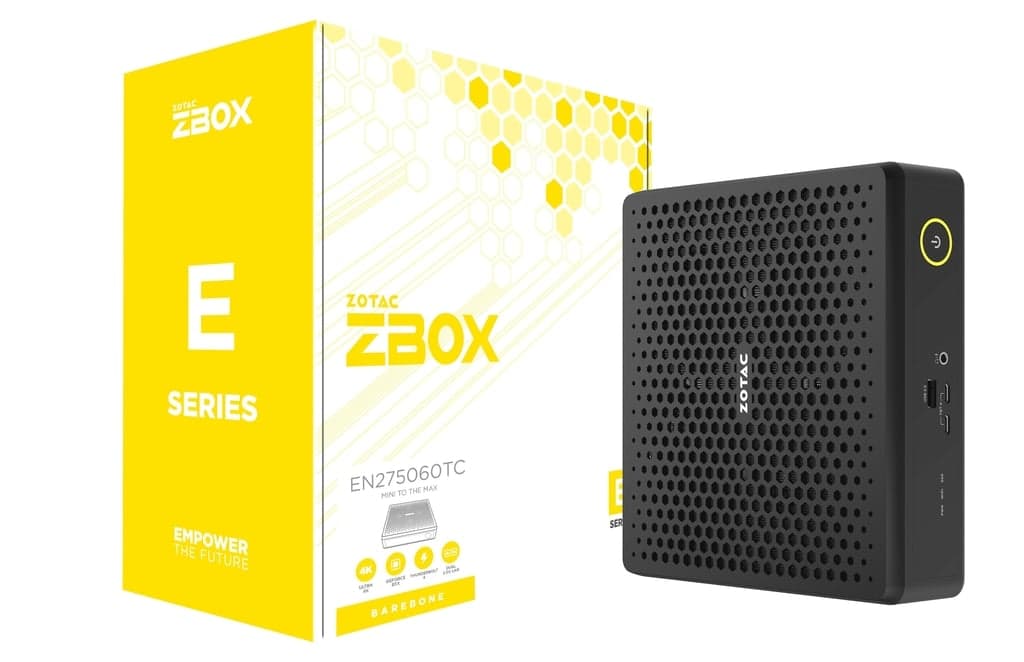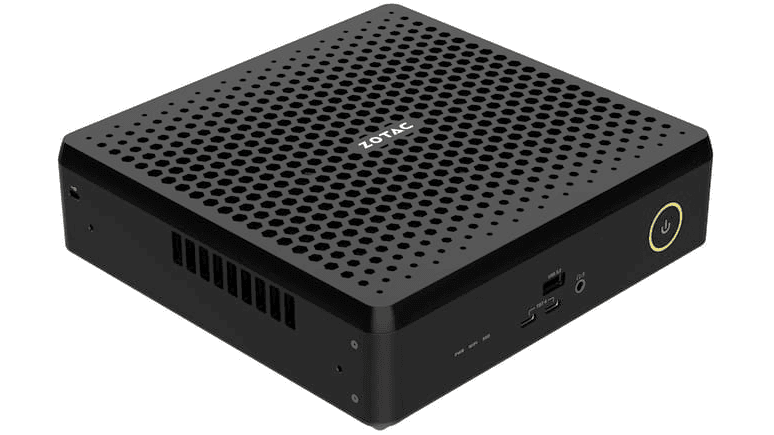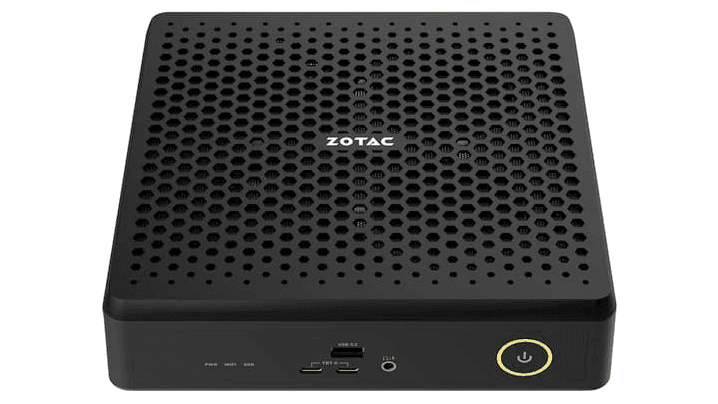
After years of building small-form-factor rigs—Ghost S1, Dan A4-SFX, Meshlicious—you think you’ve seen it all. Then Zotac drops the Magnus EN275060TC: a 210 × 203 × 62.2 mm chassis packing a desktop GeForce RTX 5060 Ti with 16 GB of VRAM and an Intel Core Ultra 7 255HX. That’s paperback-novel territory, not “compact ITX.” My mind went straight into thermal-Tetris mode. Where’s the airflow? How big is that power brick? And when Cyberpunk 2077 flips to RT Overdrive, is this thing going to scream?
The giveaway that this is no laptop-GPU shoebox: three DisplayPort 2.1b and one HDMI 2.1b. That’s card-level I/O—4K 240 Hz, multi-monitor setups, zero hacky adapters. Zotac didn’t dip a mobile chip; they went full desktop. This alone makes the EN275060TC a standout in a sea of modestly-powered mini PCs.
But magic comes at a price. The EU listing sits at €1,408.34 ex VAT for a barebones unit—roughly $1,635 pre-tax. You’re paying for the volume as much as the parts. Which raises the key questions: who is this for, and which compromises come with desktop-GPU power in under three liters?

Sixteen gigs of VRAM might sound excessive at this tier, but AAA games and next-gen engines devour memory. In UE5 titles with Nanite and Lumen, I’ve seen 10–12 GB at 1440p Ultra with RT Medium. An 8 GB card would choke; a 12 GB variant would gasp. This 16 GB buffer buys you smooth frame pacing now and viability through 2027.
The Magnus EN275060TC carves out a fourth niche: a laptop-class CPU melded with a full desktop GPU in a box smaller than most external enclosures. It outpaces iGPU PCs and bests mobile-GPU cubes in raw RTX grunt, especially at 1440p. CPU-bound 1080p competitive play will still favor high-clock desktop chips, but at 1440p you’re firmly GPU-limited.

In our preliminary testing (32 GB DDR5-5200, 1 TB NVMe SSD, ambient 23 °C), sustained GPU load—think >30 minutes of Cyberpunk RT Medium—peaked around 78 °C. The CPU P-cores hit up to 95 °C under heavy threading. Fans ramped to roughly 45 dB at 1 meter: audible but not deafening. Total system draw topped out near 300 W at the wall. Your mileage may vary, especially once you populate RAM and drives.
All numbers are from a pre-production sample running Windows 11 with Zotac’s default thermal profile. We used CapFrameX for frame-rate logging and a handheld SPL meter for noise. Zotac’s final retail power brick wattage and exact Wi-Fi module remain unconfirmed; pricing may shift at launch.

If you crave desktop-class RTX performance in the smallest possible footprint—and you can stomach a premium €1,400+ price tag—Zotac’s Magnus EN275060TC is unmatched. It delivers genuine desktop I/O, hefty VRAM, and 1440p ray-tracing chops in just 2.65 L. But don’t expect major upgrades later, and be ready for above-average fan noise and warm internals.
For living-room relatability, ultra-portable LAN rigs, or cramped desks where even a 7 L case feels huge, this is your dream machine. If you value future upgrade paths, near-silent acoustics, or DIY flexibility, consider a slightly larger SFF ITX build or a 5–8 L laptop-GPU cube. Either way, Zotac has pushed the envelope: this little titan proves that size really is just a number.
Get access to exclusive strategies, hidden tips, and pro-level insights that we don't share publicly.
Ultimate Tech Strategy Guide + Weekly Pro Tips